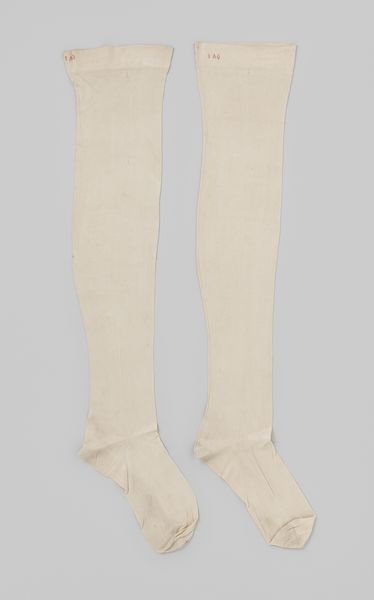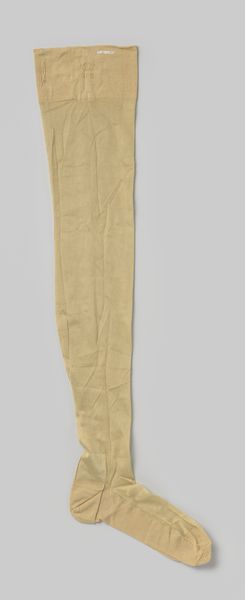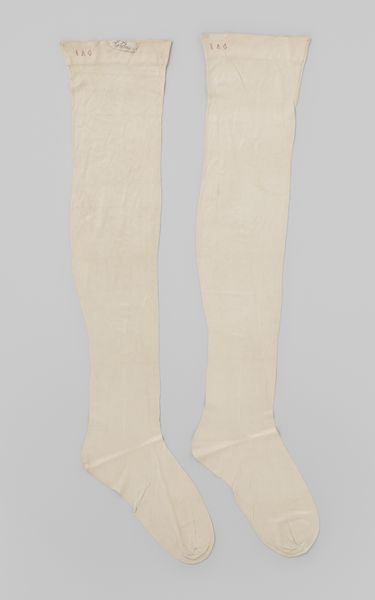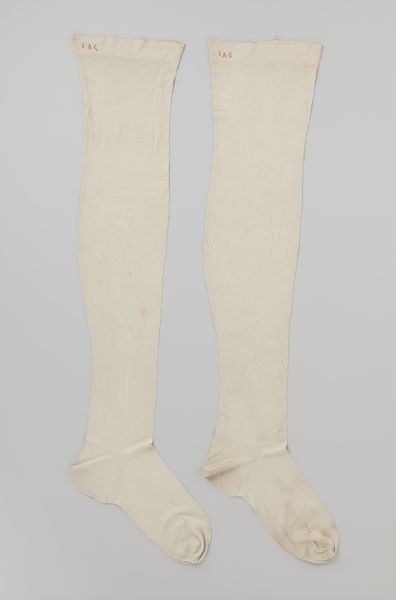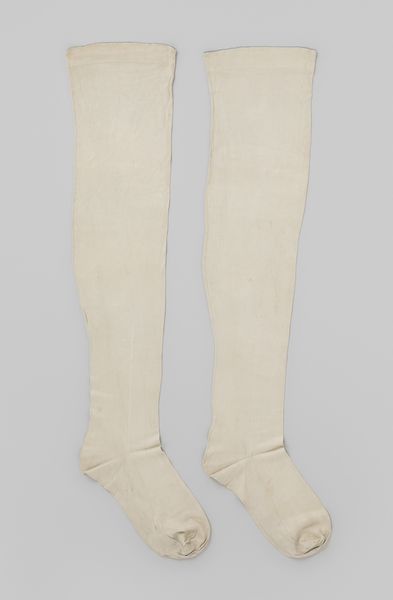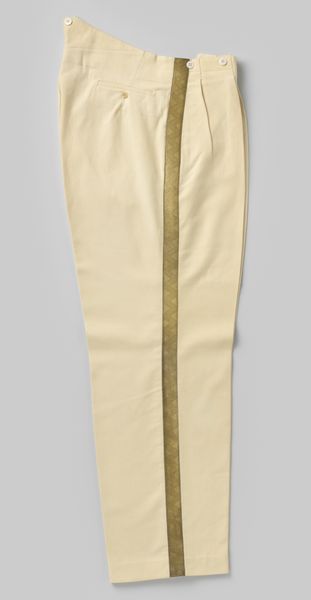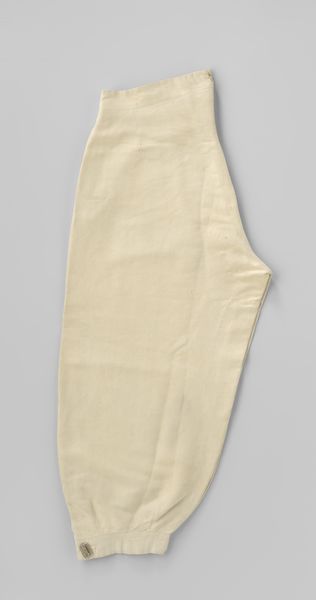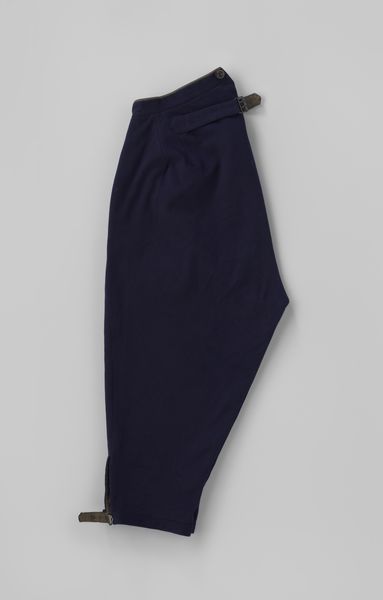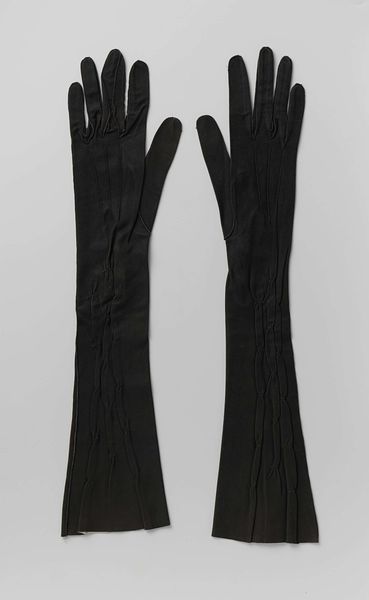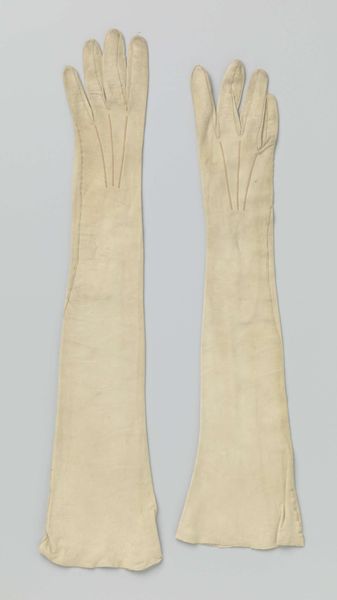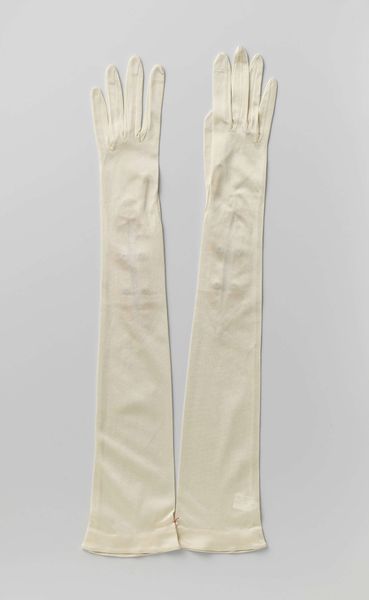
Lange dameskous van vleeskleurige zijden tricot met ingeweven kroon en '200' c. 1900 - 1940
0:00
0:00
textile
#
textile
#
figuration
Dimensions: length 79 cm, length 63.5 cm
Copyright: Rijks Museum: Open Domain
Curator: What strikes me immediately is the incredible delicacy of this silk stocking; it looks as though it would ladder at the slightest snag. Editor: Exactly. Let's contextualize. What we're looking at is a single ladies' stocking from circa 1900 to 1940. The piece is described as being made from a flesh-toned silk knit. Intriguingly, it includes an interwoven crown motif alongside the number ‘200’ woven into the fabric. This tells us about production standards, distribution networks, and what those things represented to women. Curator: The fact that it's meant to mimic "flesh" is quite telling; these stockings reinforced constructed ideas of whiteness as the default, the standard of beauty. Also, to think that such fragile stockings were daily wear for many, it brings into question the performative aspects of dress for women, the expectation for maintaining a polished appearance despite the labor and social realities of life. How has fashion always been tied up to social expectations, you see? Editor: Absolutely, the pursuit of the "ideal" feminine silhouette has been an ongoing project. The very structure of textile industries catered to these constructions of beauty, influencing gendered divisions of labour, the design of spaces, class distinctions... These stockings would signify class, social status, an idea of proper womanhood to emulate, or reject... Curator: The sheer volume of effort required to maintain such garments seems almost unimaginable today. Editor: It speaks volumes, doesn’t it? Now when viewing a work like this we can better see the intersection of the personal and the political within something so intimate, like clothing. Curator: It's really about interrogating all of these social structures from the undergarments to outerwear and its politics today, centuries after this fragile textile was constructed! Editor: Yes, looking at this stocking as a cultural object gives so much to think about: how things are made, where they go, who they are for, the power imbued into common material. Curator: Food for thought!
Comments
No comments
Be the first to comment and join the conversation on the ultimate creative platform.

